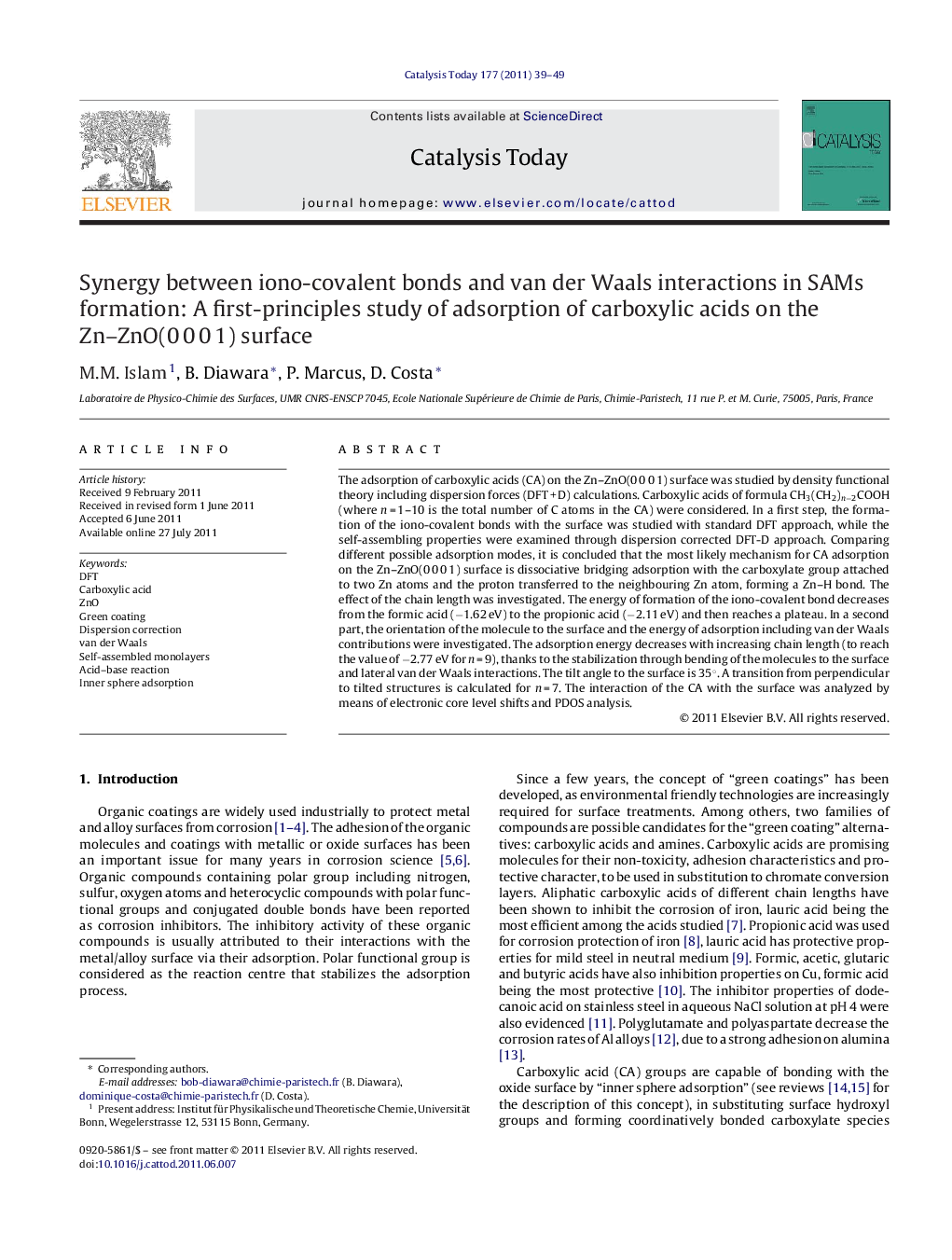| Article ID | Journal | Published Year | Pages | File Type |
|---|---|---|---|---|
| 55668 | Catalysis Today | 2011 | 11 Pages |
The adsorption of carboxylic acids (CA) on the Zn–ZnO(0 0 0 1) surface was studied by density functional theory including dispersion forces (DFT + D) calculations. Carboxylic acids of formula CH3(CH2)n−2COOH (where n = 1–10 is the total number of C atoms in the CA) were considered. In a first step, the formation of the iono-covalent bonds with the surface was studied with standard DFT approach, while the self-assembling properties were examined through dispersion corrected DFT-D approach. Comparing different possible adsorption modes, it is concluded that the most likely mechanism for CA adsorption on the Zn–ZnO(0 0 0 1) surface is dissociative bridging adsorption with the carboxylate group attached to two Zn atoms and the proton transferred to the neighbouring Zn atom, forming a Zn–H bond. The effect of the chain length was investigated. The energy of formation of the iono-covalent bond decreases from the formic acid (−1.62 eV) to the propionic acid (−2.11 eV) and then reaches a plateau. In a second part, the orientation of the molecule to the surface and the energy of adsorption including van der Waals contributions were investigated. The adsorption energy decreases with increasing chain length (to reach the value of −2.77 eV for n = 9), thanks to the stabilization through bending of the molecules to the surface and lateral van der Waals interactions. The tilt angle to the surface is 35°. A transition from perpendicular to tilted structures is calculated for n = 7. The interaction of the CA with the surface was analyzed by means of electronic core level shifts and PDOS analysis.
Graphical abstractFigure optionsDownload full-size imageDownload high-quality image (162 K)Download as PowerPoint slideHighlights► Environmental friendly corrosion inhibition. ► Carboxylic acids on ZnO(0 0 0 1). ► DFT-D calculations. ► SAM formation of carboxylates.
